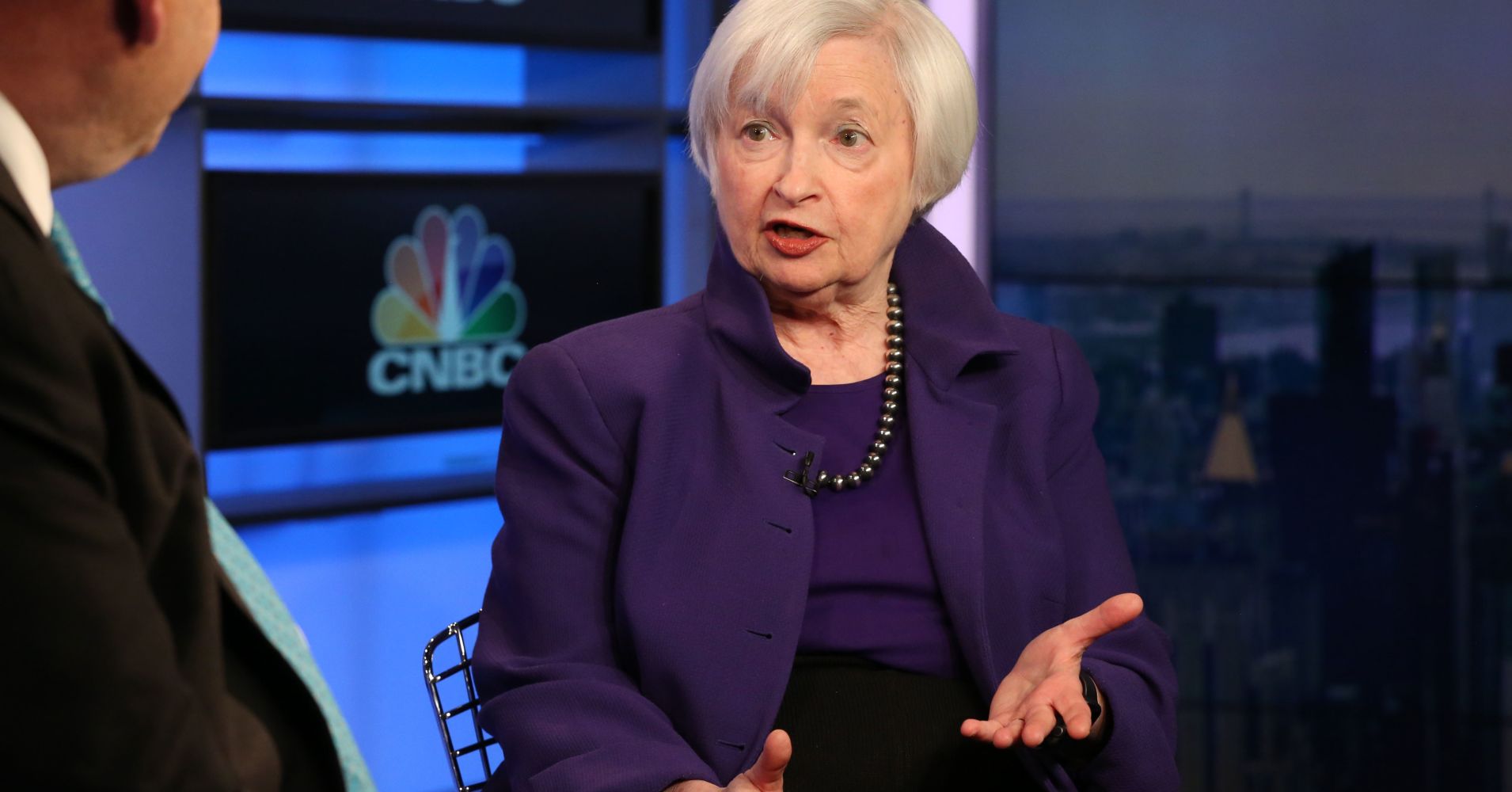The Federal Reserve’s next move may well be an interest rate cut if weakening growth around the world starts infecting the U.S. economy, former central bank Chair Janet Yellen said Wednesday.
Weakening economies in China and Europe is posing danger to an otherwise strong U.S. economy, Yellen told CNBC’s Steve Liesman during a “Power Lunch” interview.
“Of course it’s possible. If global growth really weakens and that spills over to the United States where financial conditions tighten more and we do see a weakening in the U.S. eonomy, it’s certainly possible that the next move is a cut,” she said. “But both outcomes are possible.”
The former central bank head cited “slowing global growth” as the biggest threat to the economy she once watched over.
“The data from China has been recently weak, the European data has also come in weaker than expected,” she said.
Yellen took the Fed’s reins from former Chairman Ben Bernake after two helped engineer the economy out of its worst downturn since the Great Depression.
Central to their approach was taking the central bank’s benchmark interest rate to near-zero and instituting three rounds of bond buying aimed at lowering long-term interest rates and bringing liquidity back to the economy and markets. The program resulted in a balance sheet in excess of $4.5 trillion.
Before she left,the Yellen Fed began raising rates for the first time in a decade after holding to zero rates for seven years.
Looking at the economy now, she said she sees strength despite the threats from abroad.
“So far, the economic data for the United States is solid and strong. We’ve got as you know about the lowest unemployment rate in about 50 years, continued solid job performance, low inflation,” she said. “My own view is that while we’ve long expected growth to slow in 2019 relative to last year, which probably will come in about 3 percent or more.”
Since the Fed began hiking rates in December 2015, it has followed with seven more increases that now have the fed funds rate in a range between 2.25 and 2.5 percent. Fed officials in December had indicated two more moves were likely in 2019 but since have backed off, most recently expressing a desire to be “patient” before any more action.
Yellen said that had she been asked in December for a forecast, as the Fed does quarterly, she probably would have figured two for this year as well.
“But I would have had a very wide uncertainty band around it,” she said.
In addition to the rate hikes, Yellen helped engineer the beginning of the balance sheet reduction. The plan was to allow a capped level of proceeds from the bonds roll off each month while still reinvesting the rest.
Yellen had said the process would be “like watching paint dry.” Market participants, however, have grown increasingly uneasy with the process, particularly as financial conditions have tightened. Her successor, Jerome Powell, recently came under fire for describing in December the runoff as being on “autopilot.”
Yellen said her assessment was meant to be “reassuring” but she thinks the current Fed needs to make clear that it was watching the process carefully.
NOTE: If you want to trade at forex professionally – trade with the help of our robot forex developed by our programmers.
Signal2forex reviews


 Signal2forex.com - Best Forex robots and signals
Signal2forex.com - Best Forex robots and signals




